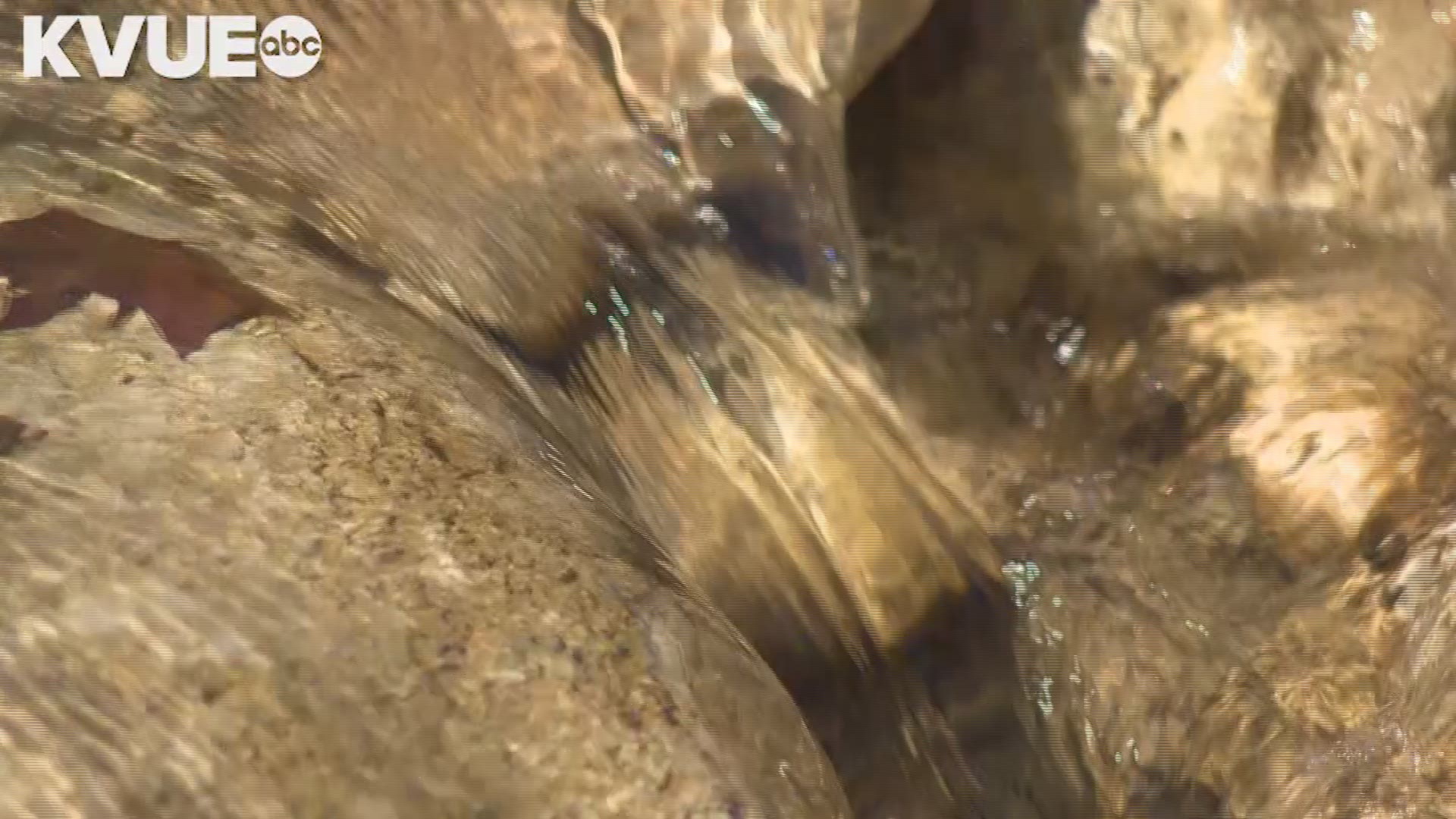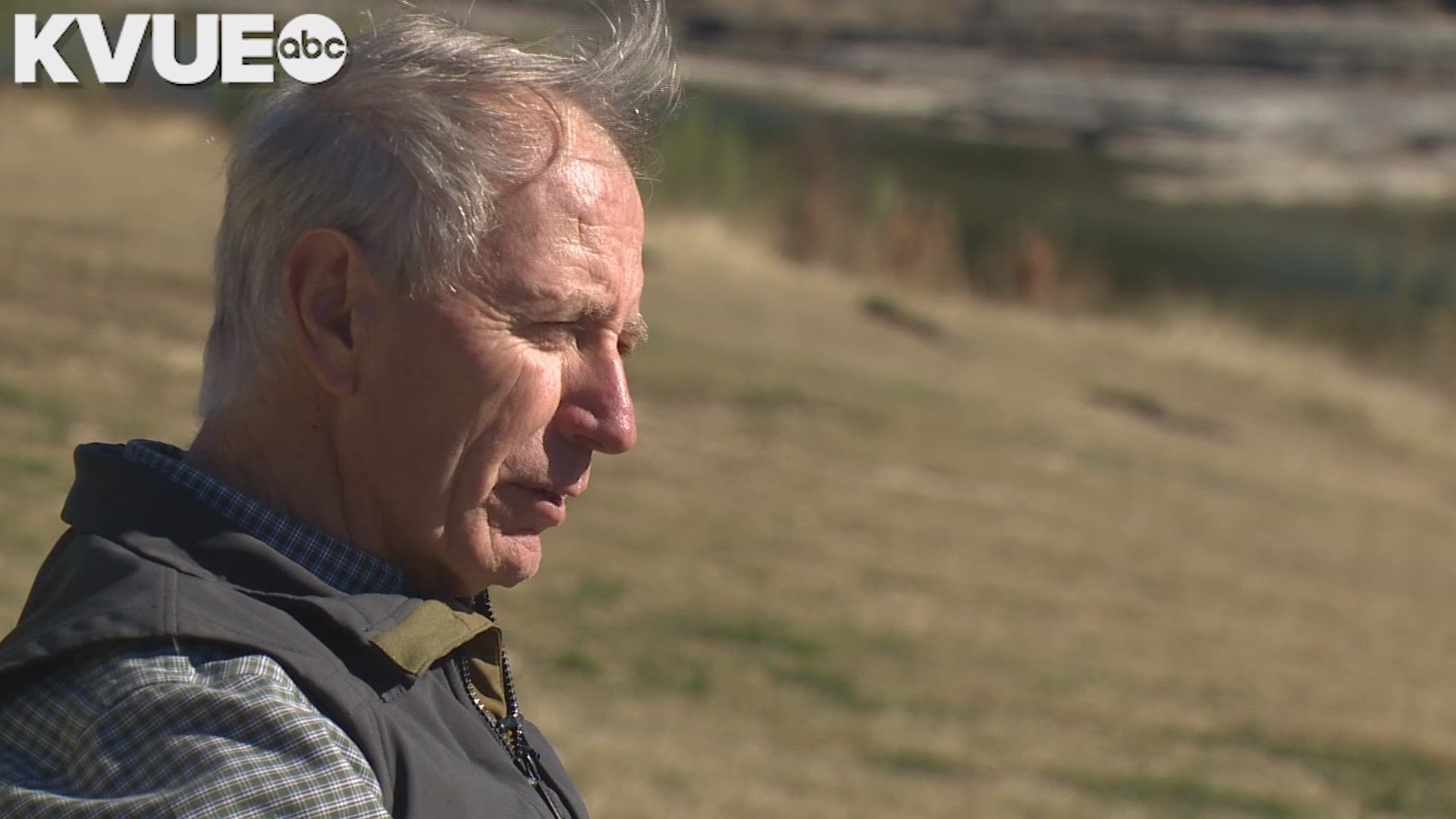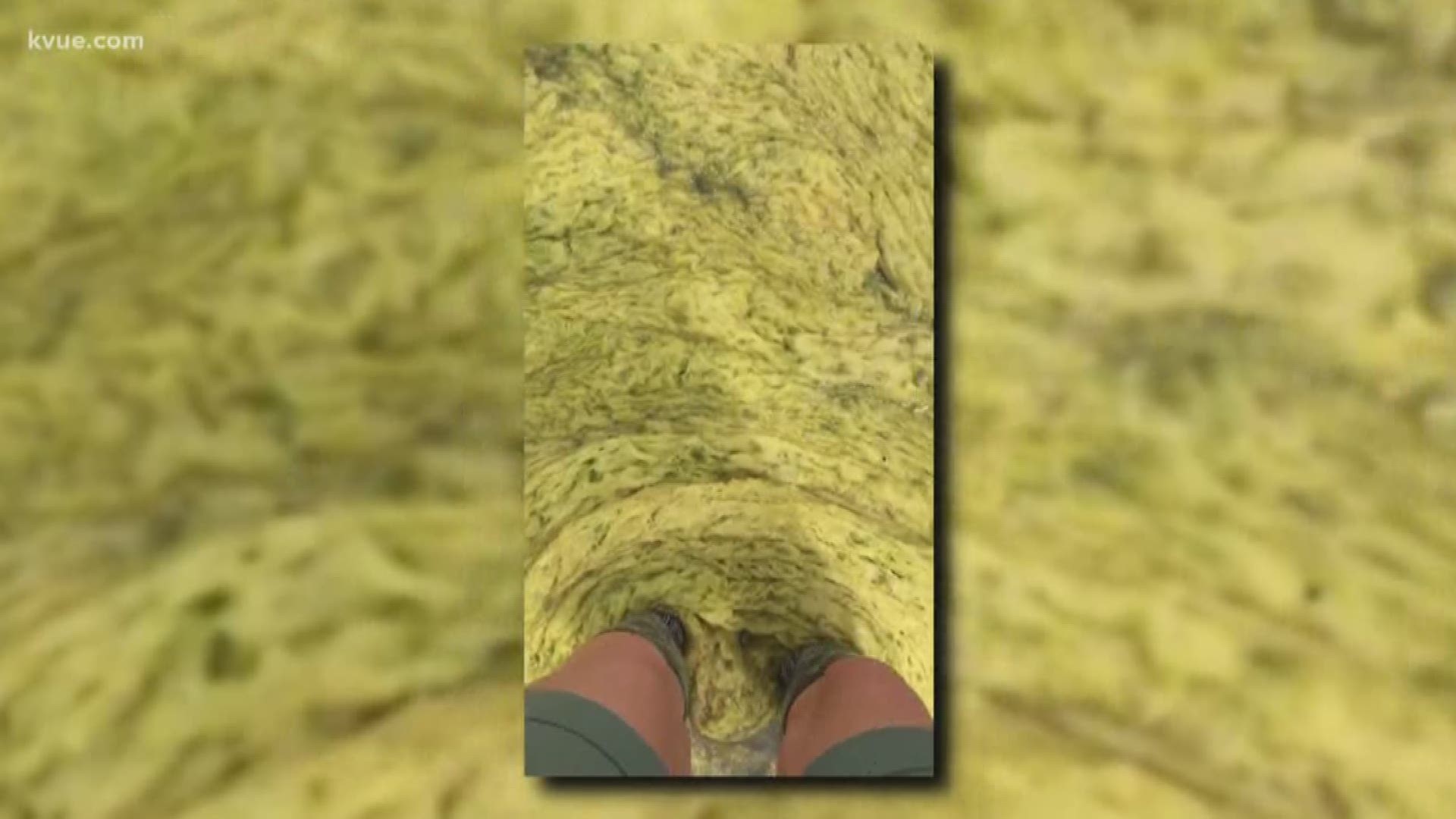AUSTIN, Texas — As part of Boomtown 2040 we are looking into growth and the impact it has on the places we call home. One of the biggest concerns about our area's growth is water.
The KVUE Defenders discovered a growing number of cities are dumping treated wastewater into the very places we enjoy and get our drinking water.
We had a difficult time finding a city or suburb willing to talk about it until we mapped out all the wastewater treatment plants in the KVUE viewing area that have permits which allow them to dump treated wastewater into our rivers, creeks and streams. There are thousands more across the state.
A simpler life, and the Blanco River, attracted Joe Theriot and his wife here five years ago.
“You can swim or fish or sit and chill all day long,” Theriot said. “We have 20 RV sites and 10 cabins and about a quarter mile river frontage.”
But where the water flows worry follows. Development is pushing wastewater treatment plants all across Central Texas to the limit. Leaving communities to search for ways to dispose of treated wastewater.
RELATED:
Newest permit request
This is a statement from the city:
The City of Blanco is seeking a Wastewater Discharge Permit through the Texas Commission on Environmental Quality (TCEQ) to address growth in the City and surrounding area. Blanco has grown more than 11-percent since 2010, and neighboring Hays County has seen 60-percent growth in the last 10 years.
In 2016, the City began the planning process, including a three-phase approach. In the first phase, the City upgraded the existing wastewater treatment plant. With that complete, now it is time for the second phase - securing the Wastewater Discharge Permit. The third and final phase, securing a Reuse Permit from TCEQ will bring Blanco service and sustainability goals into view.
“We have an obligation to our citizens to develop a long-term plan that is environmentally conscious and fiscally responsible for all the citizens of Blanco. The City must prepare today for is future and we believe our plan to expand the plant and utilize reuse as the City’s main wastewater disposal technique will achieve Blanco’s goals of environmental stewardship and fiscal responsibility,” Mayor Martha Herden said.
Thousands of Wastewater Treatment plant permits
Blanco is hardly alone. 2,583 wastewater treatment plants across the state have permission to dump treated wastewater into our waterways.
49,500 are allowed to dump treated wastewater across the country.
“It is a dirty little secret,” said J.T. Morgan, a resident of Blanco. He and his wife retired to Blanco from Odessa.
The EPA tells the Defenders those permits "will generally specify an acceptable level of a pollutant" like fecal coliform, ammonia and nitrates.
Wastewater treatment plants cannot remove antibiotics or filter out household chemicals and other contaminants that flow into storm sewers.
Central Texas Rivers Run Dry
The big concern in Central Texas is that many rivers have rocky bottoms and depending on the season – have low or no water flowing in them.
“So the only thing flowing through it would be treated wastewater,” said Theriot.
“This permit should be very concerning to you," said Mike Clifford with the Greater Edwards Aquifer Alliance. He's hired to help communities like Blanco fight wastewater discharge changes.
“This is the Blanco River. It recharges the Edwards Aquifer, it's a very important contributor to the Edwards Aquifer and what goes into the Blanco River ends up in Barton Springs,” Clifford said.
RELATED:
This “is treated, so it's clear, it doesn't look like raw sewage, but it's very high in nutrients like phosphorous and nitrogen and once those get into the water they cause algae blooms," Clifford said. "Once you have that you get a river that turns from a very clear river into one that's covered with algae.”
Concerns in Georgetown
"This river (South San Gabriel) was covered from side to side with algae this thick,” said Louise Bunnell, a Georgetown resident.
“I didn't know that's where so many people put their (treated) wastewater,” said Lawann Tull, a Georgetown resident.
Bunnell, Tull and their neighbors complained to the Texas Commission on Environmental Quality this past summer when algae took over the South San Gabriel River behind their home. The TCEQ cited the Liberty Hill Water Treatment plant for six violations and a new investigation is underway after residents filmed what appears to be some kind of chemical spill a few weeks ago.
“It's really sad," Tull said. "I'm shocked that Texas allows it."
Growth presents all kinds of challenges.
“On its best day its more than gross, it's dangerous, and on its worst day it's going to ruin this area that we love so much,” Morgan said.
The decisions we make will impact generations to come. Real concerns about the very resource we all rely on.
The TCEQ is still working on a settlement with the Liberty Hill water treatment plant. And it is working to get us copies of the wastewater violators across the state. We requested that list and are waiting on a response.
For a map of wastewater discharges across Central Texas, click here.
You can search by county for where wastewater discharges are by clicking here.




